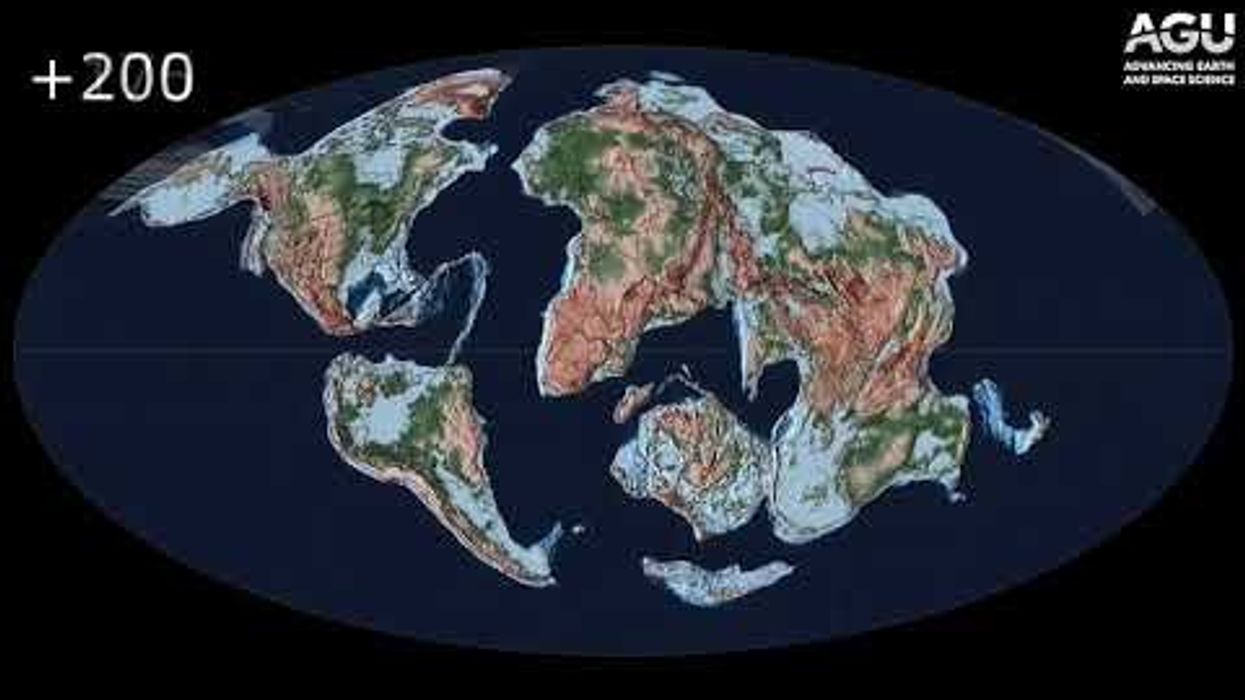Jake Brigstock
May 07, 2024
Animation: How the next supercontinent will form
Two stunning animations show how planet Earth could change to form one huge supercontinent made up of the majority of land mass seen in the world today.
Around 200 million years ago, it's said the last supercontinent called Pangea began to break apart. This is because plate tectonics moved continents into the world that's recognised today.
Plate tectonics is a scientific theory that Earth's outer shell is divided into several plates that glide over the planet's mantle.
There are three types of tectonic boundaries: convergent, where they move into each other; divergent, where they move away from each other; transform, where they move sideways in relation to each other.
It's understood the plates move at a rate of one-to-two inches every year.
Fast forward that theory over millions of years and the potential result is that a huge supercontinent could once again be formed, according to scientists.
Future supercontinent formationTectonic movement dictates not only the placement of Earth's continents, but also the shape and size of its ocean basins. In this ...
Mattias Green, an oceanographer from Bangor University’s School of Ocean Sciences who led the study which resulted in the above animation, said in a statement in 2018: "It probably doesn't mean anything to humans now in our lifetime.
"But it does enhance our understanding of interactions between plate tectonics, Earth's climate system, its oceans, and even how the evolution of life is, at least to some extent, driven by this tidal process.
"Our simulations suggest that the tides are, at the moment, abnormally large and that really was our motivating question: if the tides were weak up until 200 million years ago, and they've since shot up and become very energetic over the past two million years, what will happen if we move millions of years into the future?"
Plate tectonics were first proposed by German meteorologist Alfred Wegner in 1912 and theorised the continents were once joined in a supercontinent he named Pangea.
It took until the 1960s until it could be explained scientifically.
Since then, different teams of scientists have put together models of plate tectonics and have attempted to predict what Earth could look like millions of years into the future.
How to join the indy100's free WhatsApp channel
Sign up to our free indy100 weekly newsletter
Have your say in our news democracy. Click the upvote icon at the top of the page to help raise this article through the indy100 rankings.
Top 100
The Conversation (0)














